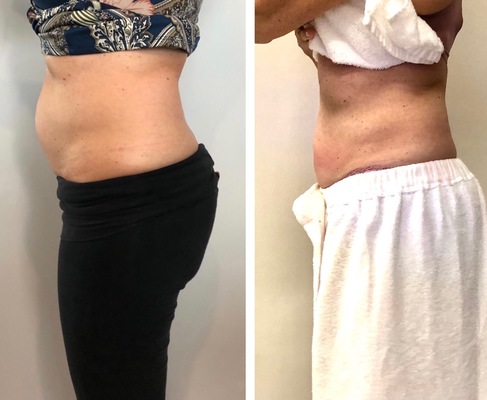
As non-surgical fat reduction methods gain popularity, two treatments have become particularly notable: fat freezing (cryolipolysis) and fat loss injections (lipolysis injections). Both methods offer effective solutions for reducing stubborn fat deposits without the need for invasive surgery, but they come with different side effects and considerations.
Fat freezing (cryolipolysis)
Fat freezing, or cryolipolysis, involves using controlled cooling to target and destroy fat cells. A specialized device is applied to the treatment area, cooling the fat cells to a temperature that induces cell death. Over time, the body naturally processes and eliminates these dead cells, resulting in a reduction of fat in the treated area.
Common side effects of fat freezing
1. Temporary redness and swelling: The cooling process can cause the skin to become red and swollen immediately after the treatment. These effects usually subside within a few hours to a few days.
2. Bruising: Some patients may experience bruising in the treated area due to the suction applied during the procedure. This bruising is typically mild and resolves within a week or two.
3. Numbness: Numbness in the treated area is a common side effect, which can last for a few days to a few weeks. It is generally not painful but can be an unusual sensation for some patients.
4. Tenderness: The treated area may feel tender to the touch for several days following the procedure. This tenderness is usually mild and manageable without medication.
5. Paradoxical Adipose Hyperplasia (PAH): In rare cases, patients may develop PAH, a condition where the fat cells in the treated area increase in size instead of decreasing. This side effect is uncommon but can require further treatment.
Fat loss injections (lipolysis injections)
Fat loss injections, often containing deoxycholic acid or phosphatidylcholine, work by breaking down fat cells in targeted areas. The body then naturally eliminates the broken-down fat through the lymphatic system. These injections are commonly used in areas like the chin, thighs, and abdomen.
Common side effects of fat loss injections
1. Swelling and redness: Similar to fat freezing, swelling and redness are common after fat loss injections. These effects typically last for a few days to a week.
2. Bruising: Bruising at the injection site is common and can vary in severity. It usually resolves within one to two weeks.
3. Pain and discomfort: Patients often report pain or a burning sensation at the injection site. This discomfort is usually temporary and can be managed with over-the-counter pain relievers.
4. Nodules or lumps: Some patients may develop temporary nodules or lumps under the skin where the injections were administered. These lumps usually dissolve on their own over time but can be concerning for some individuals.
5. Infection risk: As with any injection, there is a small risk of infection. Proper hygiene and care can minimize this risk, but it is important for patients to monitor the injection site for signs of infection, such as increased redness, swelling, or pus.
6. Allergic reactions: Though rare, allergic reactions to the injection components can occur. Symptoms may include itching, rash, or difficulty breathing, requiring immediate medical attention.
Which treatment is best for you
Both fat freezing and fat loss injections offer effective non-surgical options for reducing stubborn fat, but they come with distinct side effect profiles. Fat freezing is generally well-tolerated with temporary side effects like redness, swelling, bruising, and numbness. Rarely, it can lead to PAH, requiring additional treatment.
Fat loss injections, on the other hand, commonly cause swelling, bruising, pain, and sometimes temporary lumps. There is also a small risk of infection and allergic reactions.
Ultimately, the choice between fat freezing and fat loss injections should be based on individual preferences, the specific area of treatment, and a thorough consultation with a qualified healthcare provider. Both treatments offer viable alternatives to traditional surgical fat reduction, each with their unique benefits and potential side effects.




